-
Posts
646 -
Joined
-
Last visited
Content Type
Profiles
Forums
Gallery
Blogs
Events
Articles
Store
Downloads
Posts posted by Rlangham
-
-
Not strictly on thread, but I was recently reading one account of a Tank commander at the Battle of Cambrai, witnessing a bizarre look of horror on the faces of wounded Germans in front of the Tank - not looking at the Tank in fear that it would crush them, but behind it - when the commander looked behind, instead of simply crushing barbed wire and leaving it behind, it had gathered up behind it and was being towed by it, like a huge cocoon!
-
Looks brilliant - I got 'Wings' on DVD for christmas and there's a lot of Crossley Tender action with one, possibly two featured - bodywork looks very similar to this one
-
The gun is a three or six pounder HA ex naval gun isn't it?
Looks like the 13 pounder (as used by the RHA) with an extra recoil buffer, which helped return the barrel to the proper position
-
Looking good - maybe see you at Stoneleigh next weekend.
Love the signature by the way!
-
Hi Dennis, i'd imagine the Tank Museum at Bovington would be very keen and able to help you out - are you going for the 1920 pattern or the WW1 version?
-
Magic, definitely worth a travel to see that
-
-
Love the Holt's too - there's a company doing a 1/76 resin and metal model of a Holt 75, i've sent off a cheque for mine as well as an AEC Y type but nothing yet
http://matadormodels.co.uk/gw/lists%20GWV.htm (at the bottom)
Hoping to come across the real thing before too long
-
The three aircraft are Airco DH9 day bombers, fitted with a Puma engine. Got some good photos of the one at Duxford earlier today
-
Very interesting - the 'Lady ASC drivers' are members of the Women's Auxiliary Army Corps, Officers judging by the uniform as opposed to the Workers - not surprisingly, driving was a very popular task for women of the WAAC. The dates of 1915 and 1916 are wrong though, the WAAC wasn't formed until 1917!
Interesting to see the ASC shoulder titles worn though, haven't seen that before but it makes sense - WAAC's attached to the RFC used to wear the 'Royal Flying Corps' mudguards
-
I've got the book he refers to - it's a drawing of the vehicle which has been coloured, as with the other illustrations in the book. It's not specifically a patrol car either (as in the type with no canvas cover and armed), but the light truck type as seen on the western front and illustrated as a WF example (marked as an Irish division with a green clover divisional sign IIRC). If it is any use though i'll find it and scan it
-
Saw this wagon chassis at the Blists Hill Victorian Museum (part of the Ironbridge museums) and the wheels looked very familiar - checked back home and they look like Albion A10 wheels, what do you guys think?
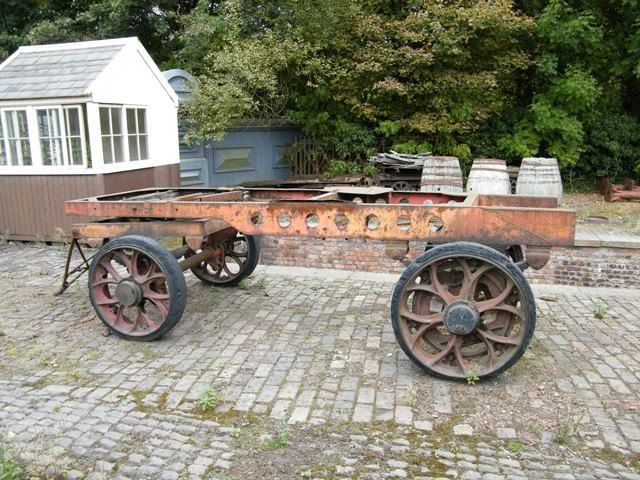

-
I saw a similar wagon yesterday and the wheels seemed like those on Albion A10's - i'll upload the photos later
-
Make that two Whippets if I win it Tony!
Stunning work
-
There's also a number of WW1 sound mirrors around - see the aviation section for my post 'WW1 Zeppelin patrol' and there's an aerial view of one, have a few more I keep meaning to upload...
-
Nice, i'd love to see photographs too. My friends Douglas is I believe a 1915 one - apparently the oral history of the guy that rode it during the war is in the IWM which i'm going to go down and record at some point
-
Here are two original photographs from my personal collection, each dating from the First World War
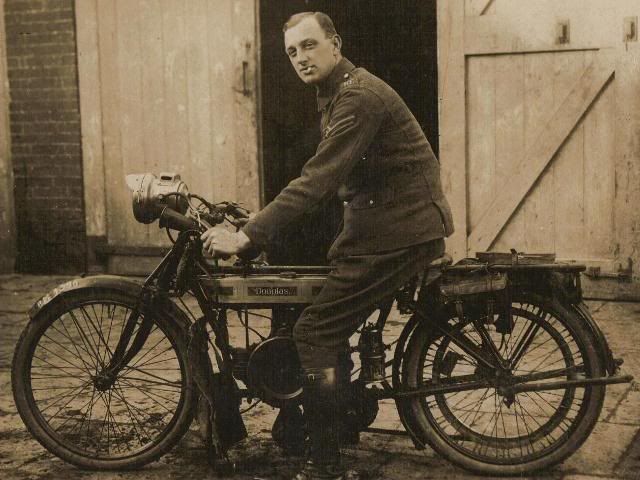
This first one, from a photograph dated 28th February 1916, is a Douglas 2 3/4hp machine, 350cc. This was a very common Despatch Rider motorcycle and appears in a lot of photographs - during the First World War, Douglas, based in Kingswood, Bristol, produced over 70,000 motorcycles for the military. This shows the same type of Douglas that Ron, our group's Despatch Rider, is currently restoring.
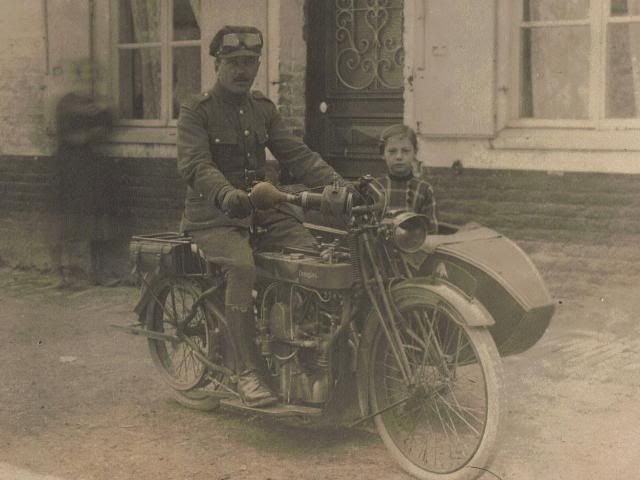
This nice photograph shows a Douglas 4hp 600cc motorcycle combination, fitted with a Douglas sidecar. The straight front forks (compare it with the angled ones on the 2 3/4hp) show that it is, at earliest, a 1916 built motorcycle.
-
Good to hear that it's gone to a good home, but would be nice to have an RFC Crossley Tender in UK or Europe (aside from the RAFM Hendon one), before everything WW1 goes to NZ!
-
This Saturday, me and a friend recreated a typical anti-Zeppelin patrol, using the description from AR Kingsford's 'Night Raiders of the Air' book. Before transferring to 100 Squadron on the Western Front flying FE2b's then Handley Page bombers, he was with 33 Home Defence Squadron flying night fighting FE2b's and FE2d's, based with A Flight at RAF Scampton. Text and the two illustrations are from the book.

RAF Scampton - somewhere in the murk!
Obvious difference is that we weren't flying at night and not at the heights flown on patrols - the aircraft was of 1946 vintage but travelled at the same speeds as the FE2b's and d's did, typically cruising at 90 knots.
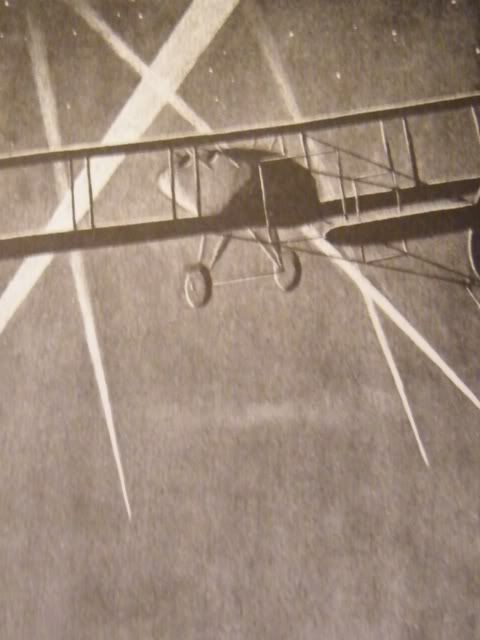
"On the twenty-first of August, 1917, I took the air in quest of Zepps for the first time. We received our first news of them at ten-thirty p.m., and at eleven o'clock, Robiers and I taxied out, having been given a great send-off."
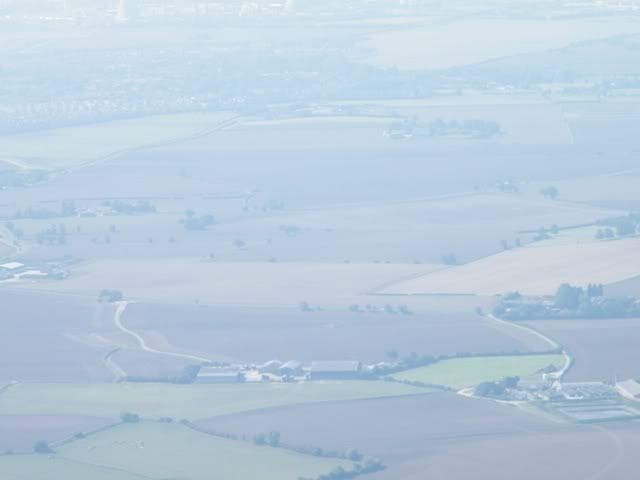
"England was not the best of countries for flying, particularly at night. The fog was our worst foe, and being near the coast, we had to be extra careful not to go wandering out over the sea, a matter very easily accomplished at night in a fog. Two or three of our chaps went west that way, and we never heard of them again. We could only conclude that the North Sea claimed them as victims"
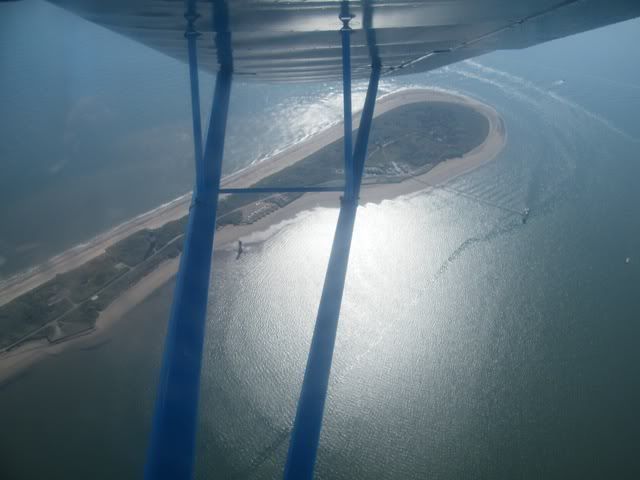
Spurn Head, at the end of Spurn Point, in the River Humber and home to coastal defences in WW1
"The Huns' Zepp Base was at Heligoland, due east of Spurn Head. His course was due west until he struck Spurn Head, where he would pick up the lights of Hull, invariably turning south and passing right over our aerodrome, then picking up Lincoln and apparently following the Northern Railway down to London"

This sound mirror at Kilnsea, on the stretch of land which narrows into Spurn Point, was used to detect engine noises and amplify them, a sort of early acoustic version of radar, and would no doubt have been the source of warning for AR Kingsford's patrol

"By the time we reached the Humber, our height was ten thousand, and again we circled round and round to get higher, both piercing the darkness with bulging eyes int he endeavour to glimpse a target. Seeing a searclight pop up over Hull, we set our nose in that direction, and soon there were about half a dozen, lighting up the sky. This show promised well. We were now over the Humber, just about where the ZR2 broke her back some time later. We were hoping to break the back of a Zepp before long."
Unfortunately, like most Home Defence patrols, Kingsford was not successful in shooting down a Zeppelin, despite the searchlight activity and heavy anti-aircraft fire he never saw the phantom raider

AR Kingsford later in the war, with 100 Squadron, in a night bombing FE2b
-
On the plus side, I can pretty safely say I saw the last flight of a Victor now
-
Very nice, especially like the Fordson WOT2. The Humber Heavy Utility has an interesting body too
-
Universal Carrier.... what more need I say!
-
Glad it was the right one - I really like 'Zeppelin', i'll have to buy one of the Region 2 DVD imports
-
I saw plenty of public, although when taking photos I try not to get the public in them anyway! A good selection of vehicles from my aspect, especially for a multi-period show





WW1 60 Pounder Shrapnell Shells
in Artillery & Anti-Tank Weapons
Posted
Thought these may be of interest, my two 60 Pounder shrapnell shells
Shrapnel Shell Mk 1, very clumsy looking
The rarer Shrapnel Shell Mk 2, much more streamlined
Close up of fuse
Fuse taken apart
Friction tube, inserted into a vent in the breech mechanism after it had been closed, and used to fire the gun
I'll get around to doing a proper photo walkaround of the IWM 60 pounder one day....